A digital marketing plan is a document that outlines the marketing goals pursued by a company. It encompasses strategies, timelines, channels, and budgets.
In this video, Alex, a marketer at SendPulse, talks about ways to make your business more digital-friendly.
Why is it important to have a digital marketing plan?
Although only 37% of marketers document their actions, data shows that recording your strategies increases the chances of business success. An accurately designed plan contains a "map" with step-by-step instructions for achieving goals. Here are the main advantages a marketing plan can bring to your business.
- Understanding of the target audience. A well thought out marketing plan begins with research to define your target audience. With a specified target audience, you will understand the behavior of your customers and adjust your sales model to help them purchase; speak one language with a customer and provide real help during the buyer journey; better understand the needs of your audience and prepare relevant product launches.
- Efficient use of resources. Having a plan prevents you from spending money on things that are unnecessary for business and were not mentioned before. You can also manage your time properly by having clearly defined deadlines in your marketing plan as well.
- The same direction for all company departments. Since all members of your company can access the plan as a coordination tool, it allows your company’s team to communicate and accordingly move in the same direction.
So, a digital marketing plan will guide you to your goals and help you benefit from your business. Next, we will discuss the components of a marketing plan.
Components of a digital marketing plan
- Content marketing
- Email marketing
- Advertising
- Mobile marketing
- Reputation marketing
- Social media marketing
- Video marketing
- Search engine optimization
- Web analytics
The components presented here communicate their message in several ways. Now let’s take a closer look at each of them to understand how they work.
Content marketing
The main goal of content marketing is to attract a customer’s attention, educate newcomers, and nurture leads. With this marketing strategy, you can nurture and educate your potential customers by providing them with the necessary content, guide them through the sales funnel, and finally make them take a desirable action.
Content can be presented in the form of case studies, blog posts, articles, reviews, surveys, white papers, quotes, charts, glossaries, dictionaries, webinars, newsletters, how-to guides, and more. It aims to convey important information and educate leads about your product. There are some of the reasons companies prefer content marketing:
- target audience growth;
- new leads;
- higher customer engagement;
- more loyal customers;
- re-engaging passive clients.
Here is a great example of content marketing from HubSpot’s blog. HubSpot educates readers about their tools and services such as HubSpot CRM and HubSpot Service Hub and provides instructions on how to use them.
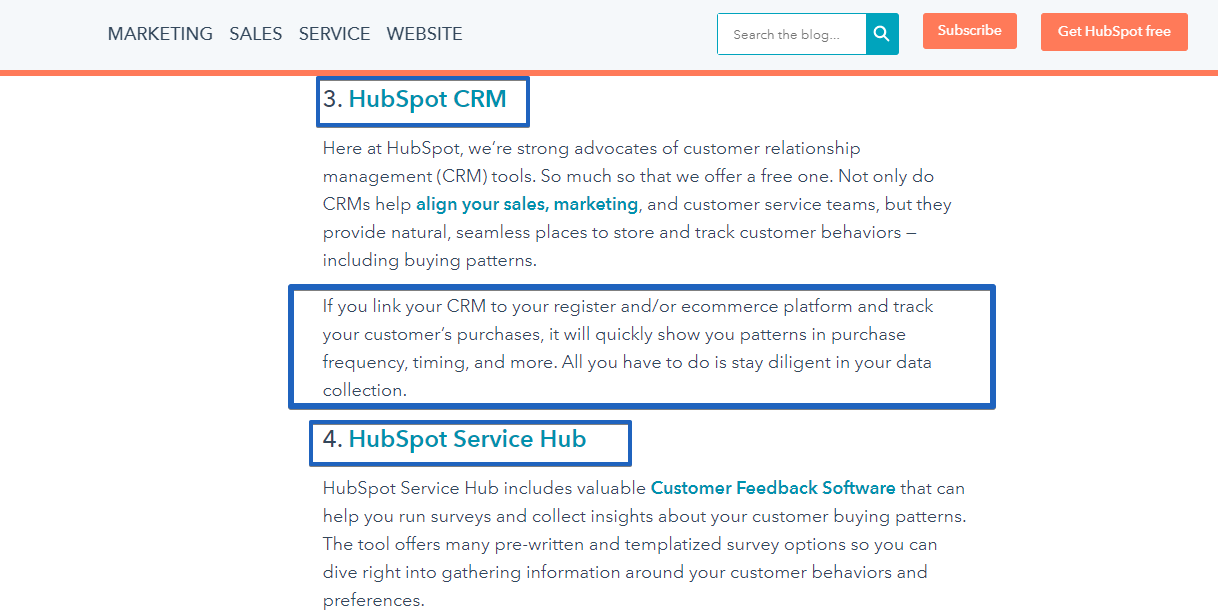
Let’s take a look at webinars as a form of content marketing. A webinar is an event held online that enables companies to connect with existing and potential clients. Webinar marketing allows you to present content in the form of a seminar or product demonstration in real-time. Nowadays webinars are considered cost-effective and convenient for presenters as they can reach a big audience from a single location. They help drive viewer attention, warm up leads, bring conversions, and generate leads as well.
To stay in touch with clients, Bain & Company constantly conducts webinars on critical issues for global businesses. Their webinars on various topics enable clients from all over the world to receive the necessary information.

Email marketing
Email is a worthwhile marketing tool that involves sending promotional content to your clients. 3.9 billion daily email users make this channel the most popular for eCommerce businesses. It allows marketers to send personalized campaigns, segment their audience, and create relevant content for them.
You can easily create professional emails without any technical or coding skills. Add text, video, or images and design them to your liking.
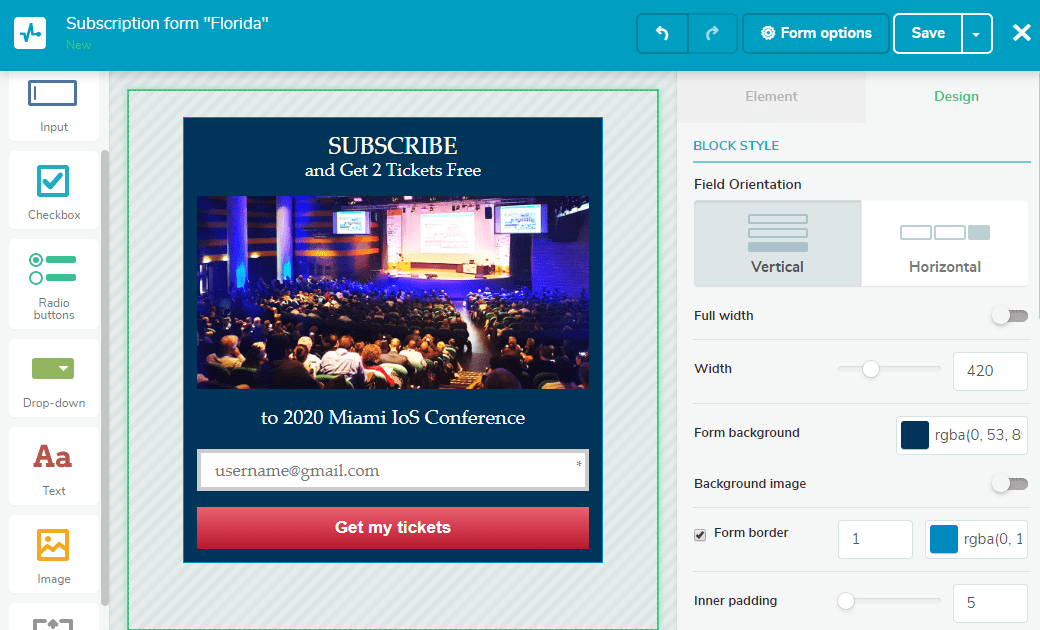
With SendPulse, creating a successful email marketing strategy is easier than you think. Automation 360 allows you to send emails automatically in a response to your clients’ actions.
Advertising
Advertising is a powerful tool that helps promote your business, find a customer base, and expand revenue streams. There are many advantages that internet advertising can bring to your business, it:
- helps to greatly expand a diverse audience;
- increases traffic to your website;
- allows targeting and retargeting;
- enables you to track the efficiency of your efforts using web analytics tools.
Nowadays, the Internet offers different ad formats to reach customers. So, it is crucial to know the types of advertising that exist on the Internet. Here are the most popular types:
- social media ads;
- search engine marketing;
- email marketing;
- display ads;
- native ads;
- video ads;
- web push;
- mobile ads.
Here is a great example of a pre-roll video from Artgrid. It offers unlimited downloads of footage with the help of video advertising on YouTube. This pre-roll ad starts before the main video and actively promotes the benefits of this website.
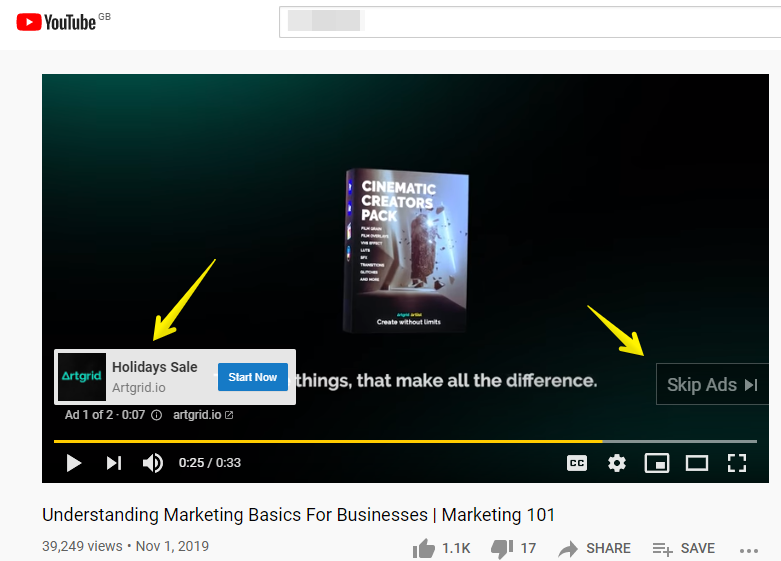
Mobile marketing
Mobile marketing is an advertising activity aimed at promoting products and services via smartphones. This type of marketing also involves optimizing sites, content, landing pages, and emails so that a person can freely use it on mobile devices.
Companies use SMS marketing as an effective way of promoting their products. Here you can see how Domino’s Pizza uses SMS to inform customers about their 25% discount.
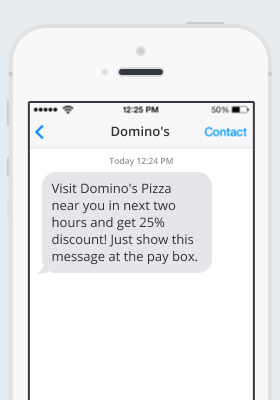
Reputation marketing
Consumer feedback is essential both for brands and potential customers. Nearly 3 out of 4 customers trust a brand if it has positive reviews. That is why positive online reviews are important for a brand's success. With reputation marketing, you can highlight positive consumer reviews of your brand and strengthen your image through both digital marketing and traditional channels. This type of marketing is aimed at enhancing the reputation on the market and increasing sales of the brand.
Below you can see the way GreenBay supermarket asks for feedback and shows reviews from their customers. Reviews help clients get acquainted with the main advantages and quickly decide on a purchase.

Social media marketing
There are 3.5 billion people that use social media for different needs, they make up 45% of the world’s population. Social media marketing means using social media channels, such as Twitter and Facebook, Instagram and Pinterest, Tumblr, and LinkedIn to connect with their audience. It is aimed at building a brand community, boosting sales, increasing traffic to websites.
To reach your goals through social media, don’t forget to publish relevant content, pay attention to the preferences of your followers, and try to engage them in several ways. Finally, analyze your results.
You can use SendPulse’s chatbot builder to create auto-reply flows for Facebook Messenger and Telegram. 1.3 billion Facebook Messenger users make it one of the most popular channels for communication. So, let’s walk through the steps on how to create a chatbot:
- If you don’t have a SendPulse account yet, register. If you already have one, just log in and go to the "Messengers" tab. Afterward, click the "Connect channels" button.
- Sign in with Facebook to create your first bot.
- Subscribe to your chatbot so that you can test the system by sending automated messages and campaigns to yourself.
- Set up welcome messages to be sent to your clients.
After creating a trigger, design an automated flow. When creating a flow, you can use trigger words, quick replies, input elements, buttons, and more. Once all of the elements you need are added, save the flow and link it to your trigger. Follow this step-by-step guide to create an automated chatbot flow.
Here you can see a sequence of predetermined auto-replies that simulate real-life conversations. This particular chatbot allows users to look for realty, both private and business premises.
Video marketing
According to statistics, 54% of consumers prefer videos over other types of content from brands. This means that if you want your business to go viral, you should try video marketing. It helps companies provide step-by-step instructions, demonstrate their products or services, show an event, or make a particular announcement as well as share behind-the-scenes.
YouTube, with over 2 billion monthly users, is a great example of a channel widely used to share and advertise products and services. Pre-roll ads are the best way to bring your product to customers.
Here you can see how H&M’s video marketing on recycled clothes works. The video demonstrates the processes that take place after they collect used clothes. With this video, H&M tries to promote such clothes.
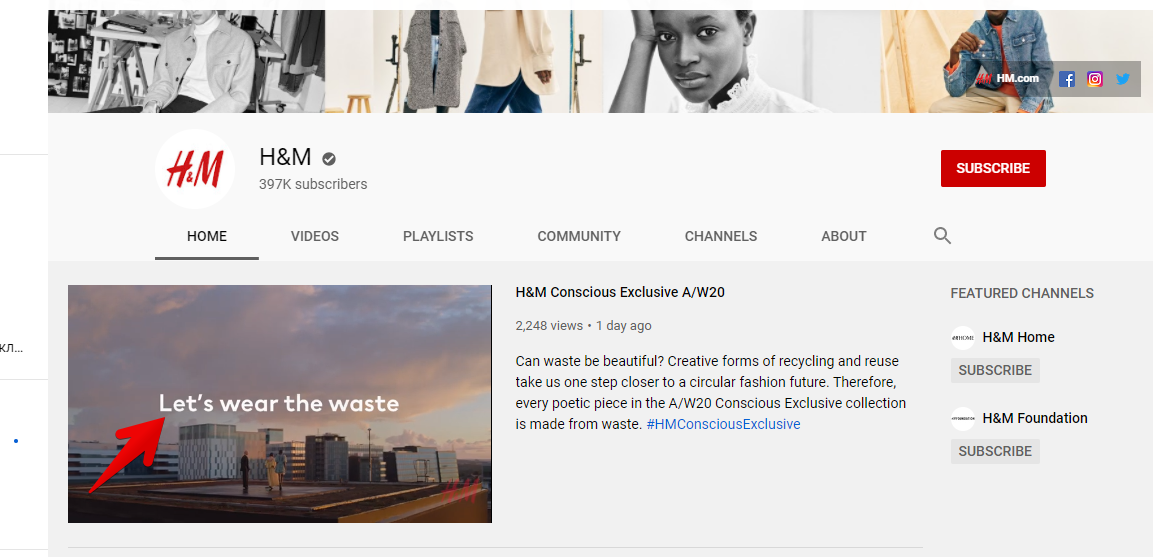
Search engine optimization
SEO is about optimizing your site and improving organic traffic. Commonly, digital marketing managers pay attention to cross links and backlinks, keywords, and unique content to maintain high rankings. It increases the visibility of the website. Remember, the better visibility, the more customers you can attract.
For instance, when you are searching for a grammar checker, it is obvious that you will pay attention to the website at the top of the search engine results page.
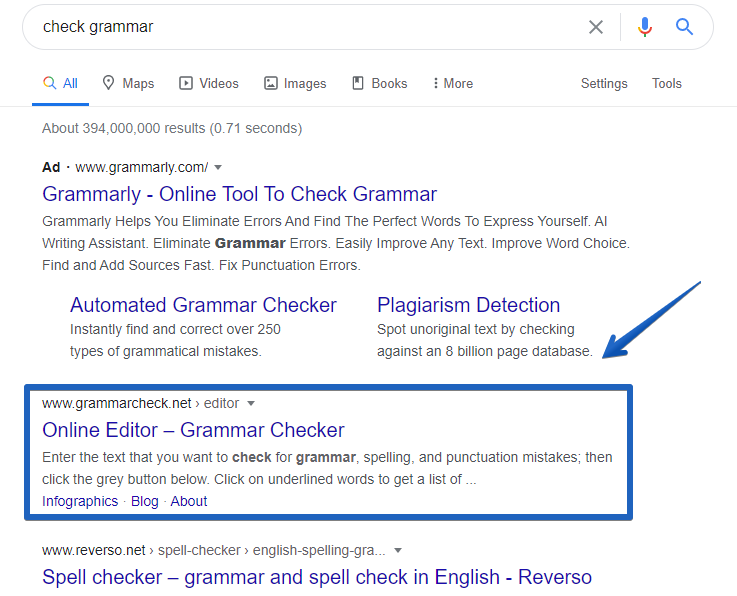
Web analytics
This is a way to track the activity of users on web pages. It enables companies to access information about the preferences and behaviors of customers. Analytics platforms usually report on the number of visitors and pages they visit on this site, the duration of their visit, and more. Tools like Google Analytics, Coremetrics, and Adobe Analytics are the most popular for a website traffic analysis.
For instance, Google Analytics gives you all insight into your site performance. This software helps you receive information about site visitors, segment them according to their interests, age, and gender; analyze visitors’ behavior and conversion path.
Below you can see Google Analytics’ dashboard where you can find the following information: demographics (age and gender), interests, geo (language and location), behavior, technology, mobile, custom, and benchmarking. In the section below you can get to know the average age of your site visitors.
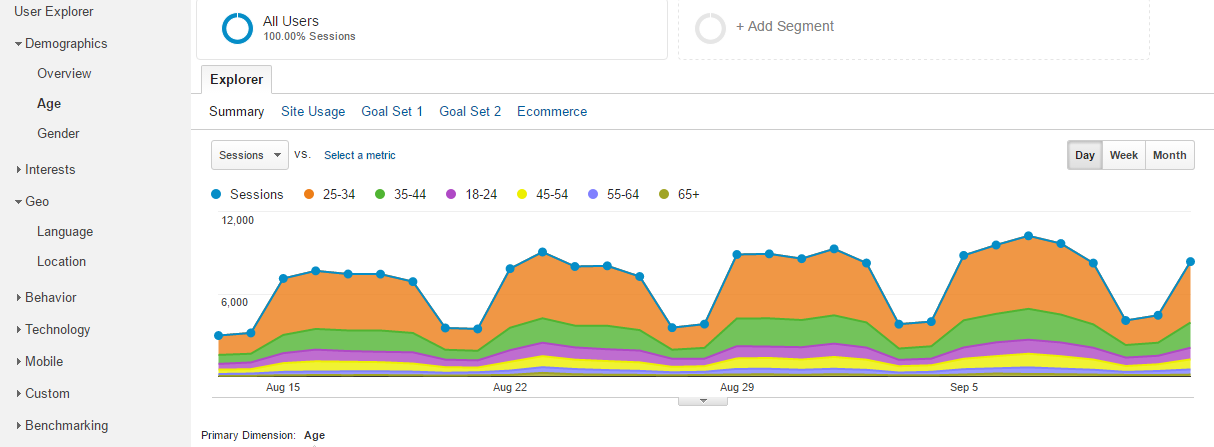
Today, it is essential to know the components of a digital marketing plan. Besides, it is equally important to know what to do to design a plan.
How to create a digital marketing plan?
- Outline your brand
- Define the audience
- Establish your goals
- Select a digital marketing strategy
- Create a budget
- Evaluate the results
This step-by-step guide will walk you through the process of creating a well-thought-out digital plan. Follow the 6 steps below.
1. Outline your brand
To create a successful marketing plan, first of all, you should outline your brand. It includes the ins and outs of your business to effectively sell it to your customers. Secondly, you should mention the benefits of your company. This will give you an idea of what makes you unique and helps to stand out from competitors.
Also, create your unique selling proposition (USP). It establishes the image of your brand and makes customers trust and choose you over others.
2. Create your buyer persona
A buyer persona is a fictional person that embodies an ideal customer. It enables you to target prospects and develop a product so that it could satisfy the needs of your customers. To create a buyer persona, you should know the background of your clients including their job and family, as well as demographics such as gender, age, location, and income. Ideally, you would know about their interests and communication preferences.
Below, you can see an example of an online shop that knows its target audience. TheVeganKind Supermarket provides customers with cruelty-free products. Although the supermarket is located in the UK, and they are ready to ship to every European country. TheVeganKind donates money to animal charities. So, their team focuses on vegan customers from Europe who are animal lovers.
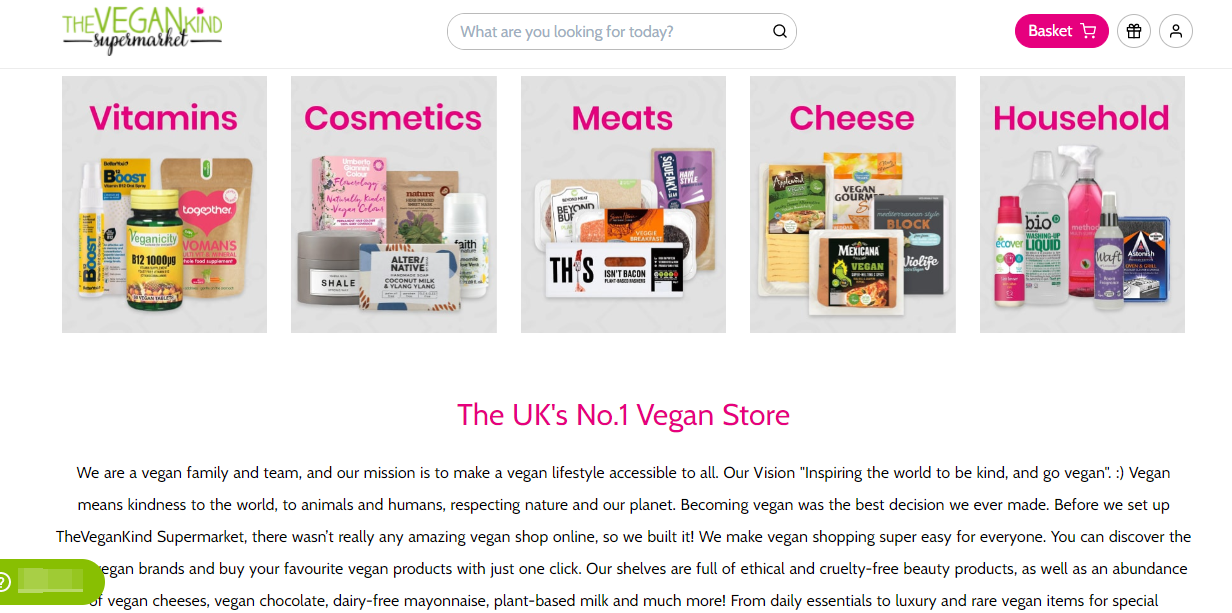
3. Establish your goals
Before you decide to enter the market, make sure the goals are set. Your goals will define your tasks, means, methods of achieving them, and channels of communication with the audience. Make sure that both long and short-term goals are set because they are equally important.
You should establish relevant, timely, specific, measurable, and attainable goals so that it is clear in what direction to go. Also, it will be easy to track your implementation and performance. Remember to track goals regularly, if you are eager to improve your strategy, tactics, and methods.
4. Create a digital marketing strategy
Once your objectives are set, you should think about how to accomplish them. Select a digital marketing strategy that suits your company. When creating a marketing plan, it is essential to consider which strategy is the best to reach your buyers. Let’s take a closer look at the main steps of building a marketing strategy.
- Make sure your goals are defined. Ask yourself what you are trying to achieve by using this strategy. For instance, if you need to drive more traffic to your website, it is clear that an SEO strategy will be a great fit for you. Then, correctly formulate the goal for your strategy, for example, increasing traffic to a certain page by 50% in 6 months. It should be specific and spelled out.
- Analyze your target audience. The second point you should consider is whom you are trying to reach. Creating a buyer persona will help you portray your ideal client as it contains information about preferences, behavior, and habits. After this, the acquired information will help you personalize your email campaigns, create relevant display ads, and segment your customers.
- Generate leads. This step includes collecting subscribers. This can be done by applying SendPulse’s free subscription forms or using online and offline events, social media accounts, contests, landing pages, surveys, quizzes, and partner websites for list building.
- Nurture your leads. Chatbots, SMS, emails, and social media will help you move your leads towards a purchase. Educate your leads and show them how to use your product to get the most out of it.
- Retain your customers. Thank them for every purchase made, ask for their feedback or reviews of your product. You can retain your customers in several ways: provide previous case studies to demonstrate the way you communicate with your audience, set expectations, create a roadmap for clients to be informed about their relationship with your business. Moreover, you can create memorable events, develop loyalty programs, and ask consumers to rate your products and services.
- Set up automation. After understanding what works well and what doesn't, you can automate email workflows to support subscribers during their buyer’s journey. Also, you can create chatbots on Facebook Messenger and Telegram that answer FAQs. You can also schedule sending SMS and web push notifications to your customers. Automation helps you save money and time on routine tasks and devote it to more important things and creativity. SendPulse enables you to create email workflows easily by following our guide.
5. Create a budget
Before implementing your strategy, you should be aware of how much you need to invest. A well thought out budget helps you distribute money properly. You can divide the budget for your business into several parts and direct them to different channels. Figure out how much you are eager to spend to gain some positive results.
You need to consider paying for SEO, social media and email marketing, website design, paid advertising, and more. SendPulse helps small businesses get started for free. You can send email campaigns and create chatbots at no cost.
Here is an example of money allocation. You can enter your company’s name, monthly and yearly budget as well as spending on tools, services, channels necessary for your business success.
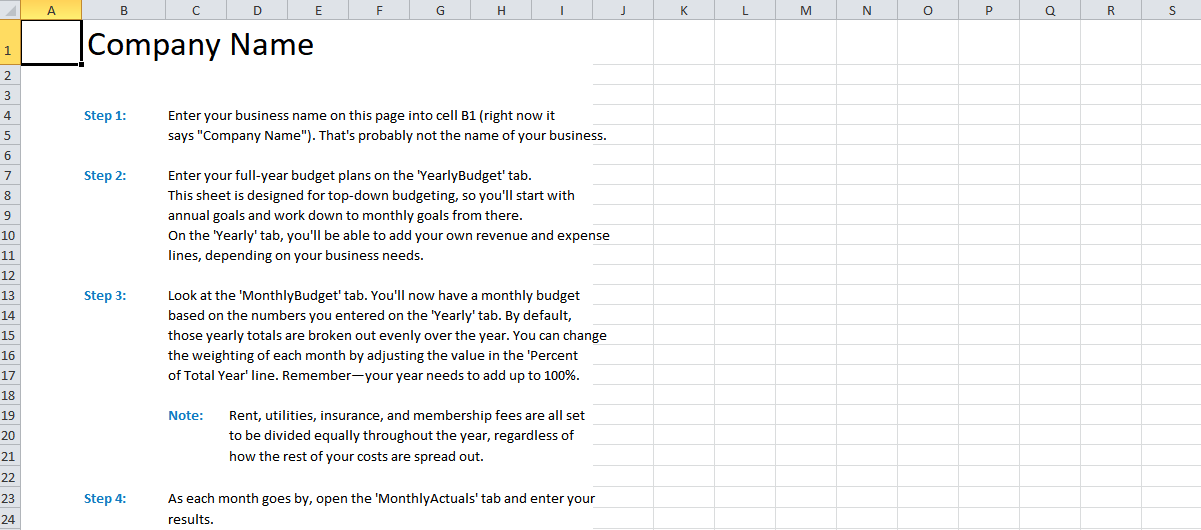
6. Monitor the performance
Lastly, to make sure that you have selected the right strategy and it’s effective, constantly track your performance. This will help you find problems and improve your tactics on the go. Besides, you should also track your organic traffic and virality on social media.
Now you are acquainted with the points important to know when developing a successful plan. SendPulse will help you advance your business at any level of its development.
References
- The article “How To Make an Effective Digital Marketing Plan” on Cyberclick blog defines the term and provides a step-by-step guide.
- The article “Create a Digital Marketing Plan in 6 Steps [Marketing Template]” on Webfx blog provides 6 steps to create a digital marketing plan that works.
- The article “How to Plan a Digital Marketing Campaign” on Digital Marketing Institute blog defines the goals and aspects, and structure of a digital marketing plan.
Last Updated: 22.03.2023


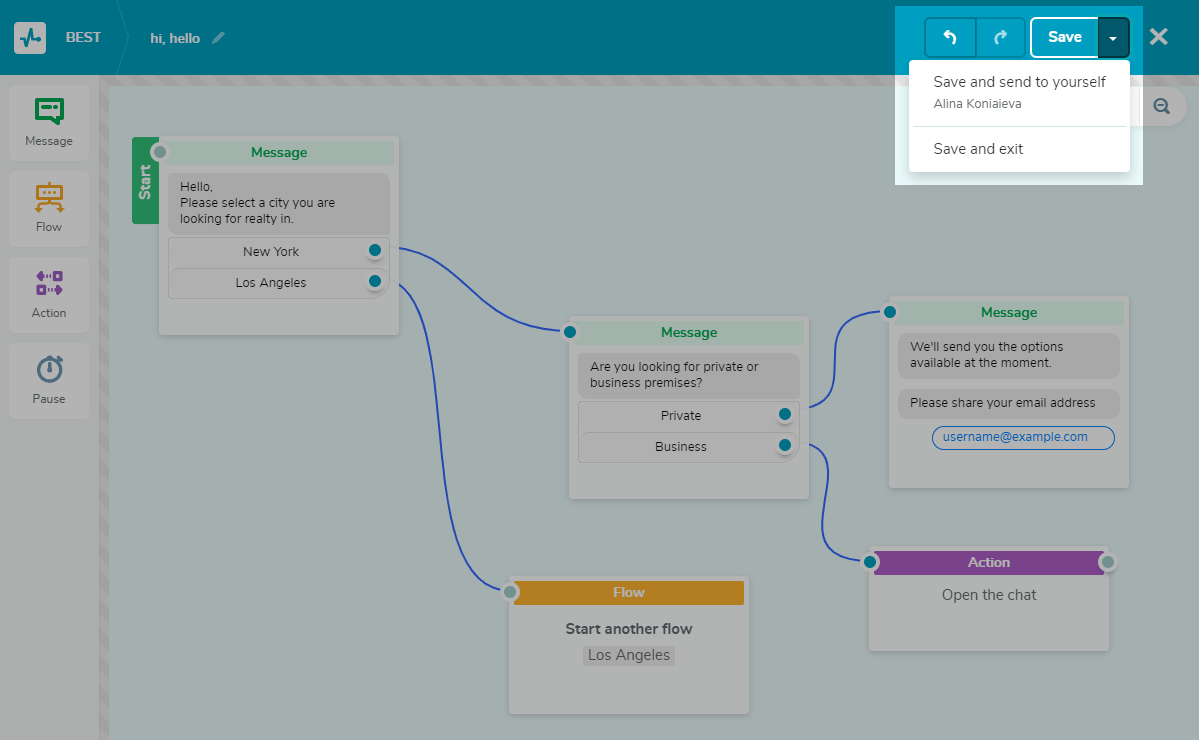
or